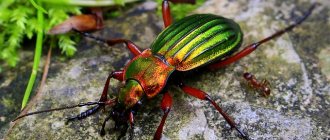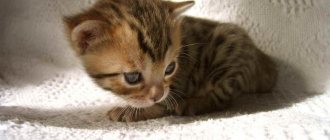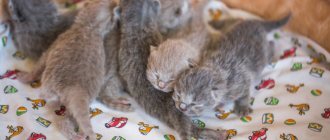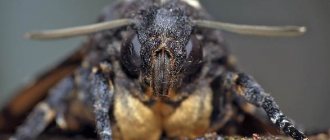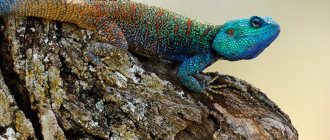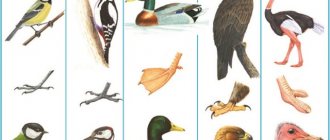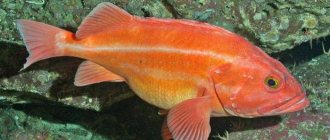Recently, the number of pests causing damage to gardens and vegetable gardens has increased. In addition, they have become even more aggressive and resistant to poisons.
One of these pests is the cockchafer, which is a type of arthropod. So far no effective remedy has been found against it. Another name for this beetle is Khrushchev. It is called so because of the characteristic crunch that occurs when the pest is destroyed.
Features of the cockchafer
He is considered one of the first heralds of spring. With the arrival of warmer weather, the Khrushchev wakes up from hibernation and goes in search of food. The insect flies very quickly, at a speed of two to three meters per second. Khrushchev is capable of covering about twenty kilometers per day. First, it rises up to a height of 5 to 100 meters, then, after circling above the ground several times, it flies further in a straight line. The interesting thing is that, according to the laws of aerodynamics, this insect should not fly due to the lift coefficient being too low.
Khrushchev always fly in a certain direction. It is impossible to knock them off course. In this regard, scientists even conducted some interesting experiments. Having caught the insect, it was released in another place, after which the cockchafer still returned to the previously chosen route.
These insects can navigate the terrain and the sun. During the flight, the beetle remembers bright objects that serve as a guide. In addition, these insects are susceptible to the influence of magnetic fields.
The rhythm of a beetle's life is determined by the sun. During the day, the insect sits on a tree, hardly moving, and it becomes more active in the evening. The life of the cockchafer is mainly nocturnal; it is at this time of day that it feeds and flies.
Coccinellidae
(ladybugs). Described approx. There are 3800 species of this family. Although ladybugs are predators, in appearance they bear little resemblance to predatory insects: they have neither long legs nor large bulging eyes. This may be due to the fact that most of them hunt sedentary prey, such as scale insects, other homoptera and aphids. As a rule, ladybugs have a wide, rounded body ranging from 0.25 to 1.3 cm in length. The elytra are often red or orange with black dots, and the antennae are usually somewhat club-shaped. The paws are adapted for living on plant leaves. They are four-segmented, but appear three-segmented. In the fall, some species climb into houses where they remain for the winter. Others migrate in large groups to mountainous areas and spend the winter in caves or piles of stones. The larvae are covered with longitudinal rows of peculiar tubercles and a distinct pattern of black spots. Ladybugs often pupate on the food plants of their prey, hanging upside down.
Appearance of a beetle
There are 24 species of these insects. There is probably no person who does not know what a cockchafer looks like. The least harm to plants comes from representatives of the Caucasian and Oriental species. Western beetles are the biggest nuisance to gardeners and gardeners.
The Western Khrushchev is brownish-yellow in color, with a black chest, red back and legs, and has a mustache with a brown “mace.” The length of the insect is from 25 to 35 millimeters. The larva of the May beetle is often white-yellow in color, fleshy, folded, and has a dark head with two clamping fangs. Beetle eggs are oval and white. The male can be distinguished from the female by the appearance of the back of the abdomen. In male chafers it looks like a long triangular process, which is much shorter in the female. The body of the beetle is covered with a chitinous shell.
Cicindelidae
(horses). Described approx. 1300 species of jumping beetles. These are agile and attractive insects, often brightly colored blue, green or red with a metallic sheen, especially on the underside. The upperparts of the body are usually sandy or reddish in color with a clear pattern. Most often, horses can be seen in sandy areas, especially in hot and sunny weather. They react sensitively to the approach of a person, taking off into the air and landing several meters further from the stranger, and then turn around and begin to watch him again. Horses run fast and are able to protect themselves with long, sharp mandibles. Their larvae live in burrows dug underground up to one and a half meters long.
The structure of the head of a Khrushchev
The beetle's head has a mouth opening with an upper lip that looks like a transverse plate. The mandibles and lower lip have palps, which are sensory organs.
There are eyes on both sides of the head. The structure of the organ of vision is complex: it consists of a huge number of simple eyes. The beetle's antennae with plates are an organ of smell; with their help, the beetle finds food. The male has a strongly curved “club” at the end of the antennae. The insect's head is unable to turn from side to side.
Gnawing type functions
The gnawing oral apparatus serves its owner not only as an effective organ of nutrition , but also as a means of protection from predators and trespassers: the antagonist muscles that move the mandibles apart in the horizontal plane have remarkable strength, because it is with the help of them that ants can hold objects of several thousand times heavier than yourself. Such a bite is not dangerous (if the beetle does not have poisonous glands), however, it is quite painful and can distract the enemy for a short time, giving the beetle the opportunity to escape unharmed.
The food of beetles with a gnawing type of structure often
becomes smaller beetles and (examples of such predators are ground beetles, ladybugs), parts of plants or the entire plant (many species of caterpillars, grasshoppers, locusts). Polite or paper wasps use their mandibles to tear off small sections of bark and old wood from dry stumps, then “chew” them, thoroughly mixing them with sticky saliva and turning them into a kind of sticky papery mass that is quite strong and hard when dry. The nest will subsequently be built from it.
The structure of the oral apparatus varies greatly among different beetles due to dietary preferences, habitat, size of the beetle and its place in the ecological niche. However, the above general scheme will be true for any beetle.
Circulatory system
Like other arthropods, this insect has an open circulatory system. With the flow of blood in the body cavity, internal organs and tissues receive nutrients. The movement of blood is provided by the heart, which pulsates and drives it to the head end of the body. Its reverse flow is impossible due to the heart valves. When the heart expands, blood enters it from the back of the body. The side openings of the central organ of the circulatory system have valves that prevent the reverse flow of blood. This biological fluid does not participate in the respiratory process.
Dytiscidae
(swimmers). Known approx. 2100 species of these beetles. Both larvae and adults live in water. Adult beetles have a smooth, streamlined body. They are usually black or dark brown, sometimes with longitudinal stripes on the elytra. In many species of swimming beetles, the males have large, rounded pads on their front legs that help hold the female during mating. The larvae of diving beetles prey on tadpoles, small fish and insects of other species. They grab prey with long sickle-shaped mandibles, inside of which there is a channel that opens with a hole at the top. When the mandibles penetrate the prey, digestive juice is injected into its body through these channels. Under the influence of its enzymes, the tissues of the prey are liquefied and then absorbed by the beetle through the same channels. Thus, digestion occurs outside the swimmer's body.
How the cockchafer reproduces. Stages of development
The female cockchafer can reproduce 2-3 weeks after it emerges from the pupa. After mating, she buries herself in the ground, where she lays eggs. After this, she again goes in search of a male, and the process of laying eggs is repeated. The whole action can happen up to four times, after which the female dies.
Egg
The eggs that the female lays are off-white in color. Their width is 0.2 cm, length - 0.3 cm. At first the eggs are soft, then they harden. Their development occurs from 24 to 50 days.
Larva
It is thick and curved, and has a light color. The cockchafer larva has a round head, light yellow or brown color and three pairs of legs. Can reach 65 mm in length.
Doll
The pupa is yellowish in color, is usually located in the ground, in a “cradle”, and is similar in appearance to an adult beetle, but its wings are shorter. The length of the pupa reaches 0.25 cm. This developmental phase lasts from two to four weeks.
Carabidae
(ground beetles). Described approx. 20,000 species of these beetles; some of them reach a length of 90 mm. Characteristic features of ground beetles as predatory insects include long legs, large bulging eyes and forward-pointing sharp mandibles. Their larvae are also predators, but, like adults, they can also feed on animal corpses and other decaying organic matter. One group of ground beetles eats exclusively seeds.
The color of these beetles is usually black, brown or metallic, and the elytra are often streaked with longitudinal lines. Ground beetles can be found on the surface of the ground or in the soil, especially along rocky banks of streams and rivers, as well as in rotting wood. In some species, the hind wings are absent and the elytra are fused. However, many tree-dwelling tropical species have well-developed membranous wings and are excellent fliers. Most ground beetles can secrete a foul-smelling liquid from the rear end of their body, which probably serves to scare off enemies. In bombardier beetles, it immediately turns into steam, taking the form of a dense cloud, and its ejection is accompanied by a rather loud shooting sound.
Stages of development
In the first summer, the larvae eat humus and grass roots. In winter, it hides 1.5 meters into the ground, and with the arrival of spring it moves closer to the root system of plants.
The two-year-old larva feeds on the roots of a young tree. In the third year, it reaches a size of five to six centimeters; now it can even gnaw the roots of adult trees. In the fourth year of life, the larva transforms into a pupa, and two months later it becomes a beetle.
In winter, the beetles are in suspended animation; with the arrival of spring warmth, the May beetle begins its flight.
Silphidae
(dead eaters). Described approx. 600 species of these beetles. The most famous members of the family with a black and orange pattern on the elytra are called burying beetles. They lay eggs on the carcasses of small animals, which they then bury in the ground (“bury”). Burying it protects the corpse from drying out during the period when the larvae feed on it. Unlike brightly colored burying beetles, some carrion beetles are black, with a dull, rough body surface. Species living in anthills and eyeless cave forms are known.
What does Khrushchev eat?
In spring, when the air warms up to a temperature of +10°C and above, the cockchafer flies out. The insect causes enormous damage to fruit trees, damaging leaves, flowers, and ovaries. Apple, plum, cherry, and walnut trees suffer more than other trees. In addition, the May beetle can eat the needles and foliage of various shrubs. The only things he doesn't eat are lilac and ash leaves. Having destroyed the foliage in one area, the beetle flies to another.
The larvae damage the roots and trunks of plants and vegetable crops.
Tenebrionidae
(darkling beetles). More than 10,000 species of darkling beetles are known. The appearance of representatives of this family is very typical for beetles in general. They are approximately 1.3 to 5 cm long and are usually brown or black in color. Many species have clearly protruding stripes along the elytra. Darkling beetles can be distinguished by two clearly visible features: the tarsi of their hind legs consist of only 4 segments, while the front two pairs have five, and the posterior edge of the eye often continues as a thick ridge on the side of the head. Some darkling beetles live in semi-deserts, many live in the soil or on its surface. The larvae of a number of soil species harm plants like wireworms, which they resemble in appearance; they are called false wireworms.
Scarabaeidae
(lamellae). Described approx. 15,000 species of this family. Lamellar beetles have a stocky shape and sizes from very small to very large (for example, the length of the Goliath beetle reaches 11 cm). The antennae are club-shaped, and the segments of the club are usually flattened and elongated into plates connected by the bases, which can move apart like a fan. Many species feed on dung and have a good sense of smell, which is necessary for searching for food. Scarabs make balls from dung, and then, moving backwards, roll them with their hind legs and bury them in loose soil for storage. In Ancient Egypt, these beetles were considered sacred.
Some Indian dung beetles make huge balls of dung and cover them with clay before burying them. When such balls were found in a semi-petrified state, they were sometimes mistaken for stone cannonballs. Adult representatives of another group, beetles, feed on leaves, and their larvae feed on plant roots.
Chrysomelidae
(leaf beetles). Described approx. There are 25,000 species of this family, one of the largest in the order of beetles. Although outwardly its representatives are somewhat similar to ladybugs, leaf beetles can be distinguished by an additional leg segment (it seems that there are 4 of them, but in fact there are 5) and a plant diet. These beetles are often brightly colored, sometimes have a metallic sheen, and often have a striped pattern. Some species known as flea beetles or ground flea beetles (subfamily Halticinae) are good jumpers. The mechanism of their jumping is the same as that of grasshoppers, due to the fundamental similarity in the structure of the hind legs, which have very thick thighs.
General characteristics of the class
They live in soil, water, plant tissues, animals and humans.
Fertility:
- queen bee - 1,500,000 eggs in her entire life (lives 5 years).
- termite queen - 10,000,000 eggs per life (lives 10 years).
Benefit:
- pollinate plants;
- destroy field pests;
- gardens and vegetable gardens.
Harm:
- blood-sucking (affect milk yield);
- carry pathogens from animals to humans (lice - typhus, relapsing fever; mosquitoes - malaria; flies - eye diseases).
Types of mouthparts:
- gnawing - beetles, cockroaches, grasshoppers;
- sucking - butterflies;
- piercing - mosquito;
- licking - fly;
- gnawing-licking - bees, gadflies, wasps, bumblebees, hornets.
Vision is complex (faceted).
A person distinguishes about 60 individual colors; bees see yellow, blue-green, blue, ultraviolet (butterflies see red).
The shape of objects is distinguished - predatory (dragonflies, tyrs...); social (ants, bees, wasps).
The sense of smell is on the antennae (butterfly - 2-3 km).
Taste organ on the mouth parts (jaws, lips, palps).
Just like humans, they distinguish between sweet, sour, salty, and bitter.
Sense organs are well developed and provide insects with great information about the external environment.
Lamellar arthropods
They are divided into 25,000 subspecies. The body of such insects is small, elongated up to 60 mm. Some representatives of the subfamily have an oval body. The chitinous covers of lamellar beetles are dark green with small growths in the form of spines. Such insects eat manure and plant debris.
The most common representative of the subspecies is the sacred scarab. It is distinguished by a smooth convex round body, painted black. The body size of a male individual does not exceed 35−37 mm. A special feature of the scarab is its large teeth located in the area of the front legs. Representatives of this species live in Bulgaria, Spain, Georgia, Cyprus, and Africa. They feed on plant debris.
CLASSIFICATION
The order of beetles, or Coleoptera, is usually divided into three suborders.
1. Adephaga (carnivores). Mostly predatory beetles with simple thread-like or flagellate antennae, bulging eyes and five-segmented legs. Examples are ground beetles, whirligigs, and diving beetles.
2. Archostemata (archostemata). This is an ancient, once thriving, but now very species-poor group of rare, unusual beetles whose wing tips are curled into a spiral. It unites only two families - Cupedidae and Micromalthidae (they do not have Russian names).
3. Polyphaga (bivorous). An extremely species-rich, diverse group that includes all other beetles, in particular carrion beetles, ladybugs, darkling beetles, click beetles, fireflies, leaf beetles, longhorned beetles, and weevils.
Digestion Process Chain
The development of the cockchafer is such that it requires solid food of plant origin. The movement of food begins from the jaws, then it enters the pharynx and esophagus. The long esophagus has a special extension called the crop, from where food passes into the chewing stomach system. After grinding, the food enters the midgut, where digestive juices finally digest it and distribute it into waste and nutrients.
Since the beetle puts its food into its mouth with the help of palps (oral appendages), the insect simply cannot survive without these paired organs.
Dermestidae
(carpet beetles). Described approx. 600 of their species. Almost all skin beetles are relatively small, often spotted. The spots are associated with thin scales that partially cover the body, which can be one or more colors. The antennae are short, club-shaped, capable of inserting into special grooves on the prothorax. The color of the heavily pubescent larvae ranges from reddish-brown to black. They can be found on decomposing animal carcasses, in storerooms, under carpets, in woolen clothing, furs or leather, and can seriously damage these items. The larvae often molt, and their presence is revealed by accumulations of shed integument. Adult beetles eat the same food as the larvae, but during settlement, adults feed on pollen, so they are sometimes found on flowers.
Leaf beetles
The species has 32,000 varieties. Insects have an elongated or spherical body of a rich blue or golden color. The size of the female’s body does not exceed 16 mm.
The most common representative of the subspecies is the mint leaf beetle . It has a small, smooth, convex body of blue-green color. The maximum size of an insect is 11 mm. The green leaf beetle loves to feast on mint leaves, which is why it got its characteristic name.
